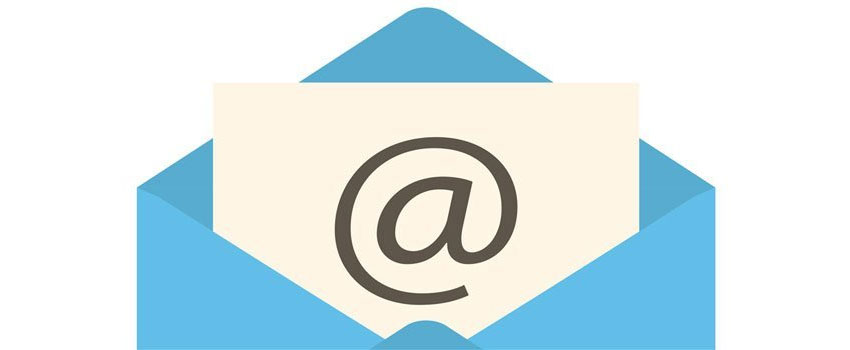How to Boost email opening and clickthrough rates
Good inbound marketing include email sending to people who actually want to hear from you. But most of the time, people just get tired of reading emails and can really be very selective about the emails they open and read. Sometimes, the emails just get lost in the spam folder and in cases when the emails are opened, it is also likely that there is no response by way of clicks.
You want to improve your email opening and click-through rates, here are 22 tips that can help you. They will also help your lead generation potential.
Email Marketing Tips
- Do not buy email addresses.
- Abide by CAN-SPAM rules.
- Ensure your opt-in process complies with GDPR.
- Email new contacts within 24 hours.
- Send your emails from a real person, not your company.
- Pre-set the preview text.
- Write clear and clickable subject lines.
- Keep your emails concise.
- Include one call-to-action button per email.
- Add alt text to your CTA image.
- Hyperlink your emails’ images.
- Include noticeable text links.
- Place at least one clickable item above the fold.
- Add alt text to all of your images.
- Avoid background images.
- Add social sharing buttons.
- Simplify sharing with ready-made tweets.
- Add an email forwarding option.
- Clean up the plain text version of your emails.
- Optimize your emails for mobile users.
- Preview and test your emails before sending them.
- Monitor each email’s performance.
Further reading:
How To Build A Good Customer Experience To Improve Your Website Conversion Rate
Google’s New Content Guidelines And AI Generated Content
1. Do not buy email addresses.
Do not be persuaded by any bluff about the authenticity of emails and any assurances from people who want to sell email addresses to you. It is bad practice to send emails to people who are not expecting emails from you because they will turn down your messages and are unlikely to click and read them. Buying email addresses should not be part of your strategy.
Moreover, buying emails is in violation of GDPR and that makes you deserve a penalty for spamming.
2. Abide by CAN-SPAM rules.
CAN-SPAM (Controlling the Assault of Non-Solicited Pornography And Marketing) is an act that was passed in 2003. Essentially, it’s a law that establishes the rules for commercial email and commercial messages, gives recipients the right to have a business stop emailing them, and outlines the penalties incurred for those who violate the law.
In order to be CAN-SPAM compliant, it’s important that your email messages follow these rules, which are available on the FTC’s website.
- Include your valid physical postal address in every email you send out.
- Give recipients a clear and obvious way to opt out (i.e., unsubscribe) of every email you send.
- Use clear “From,” “To,” and “Reply to” language that accurately reflects who you are.
- Avoid “no-reply” or similar sender names, which prevent recipients from opting out of an email newsletter if they’d like to.
- Avoid selling or transferring any email addresses to another list.
We suggest that you check the FTC’s website for extensive advice on this subject.
Further reading:
Understanding the Google Link Spam Update
3. Ensure your opt-in process complies with GDPR.
The General Data Protection Regulation (GDPR), is a new law enacted across Europe in May 2018 to better protect internet users’ personal data. Because you never can define where your subscribers reside, you need to comply with this law as an essential rule.
It is important to note that under GDPR regulations, pre-checking the subscriber opt-in to marketing campaigns is a violation of GDPR. So, to comply with GDPR, make sure your European users and customers are given the clear option to opt into your email newsletter themselves — don’t make the decision for them.
This rule may not be so friendly with your email marketing campaign, but the good side of it is that it improves your email opening and clickthrough rates. The fact is when you limit your email campaign to just those that have shown interest, you also maximize the chances that you’ll convert email readers to qualified leads.
4. Email new contacts within 24 hours.
It is best to take advantage of any opportunity when your client or prospect’s interest is high. Signing up or subscribing to your newsletter is a signal of their interest and you can subtly take advantage of that by emailing them on other offers that could be of interest.
If you don’t have an automated email workflow set up, then you may be able to gain greater attention and eventual deal through your email campaigns. If you do not have such an automated system in place, you need to consider setting up one. It will go a long way in generating more interest from clients and getting the best out of your email campaigns.
Further reading:
Email Marketing And The Trouble With Auto-Responders
5. Send your emails from a real person, not your company.
When a real person signs your emails, your email open rate increases. This is because email recipients tend to trust a personalized sender name and email address rather than a generic one. Of course, the high rate of spamming has made people very wary of opening emails from unfamiliar persons.
6. Pre-set the preview text.
Most email clients will use some texts from your opening paragraph along with the email title in their display to the clients. This is common with email clients like the iPhone Mail app, Gmail, and Outlook. You need to carefully craft this text to have the maximum impact. When the preview text is not set, the email client will automatically pull from the body of your email. This may not be the best for your purposes and may reduce the productivity of your emails.
7. Write clear and clickable subject lines.
Your subject lines should be the most important and most outstanding piece of content used to attract your readers. Once your subject lines are dull and unattractive, click through rates can be seriously hampered.
To entice readers to click, be sure your subject lines:
- Are very clear and understandable.
- Ensure they are not more than 50 characters so they don’t get cut off, particularly by mobile devices.
- Avoid the use of jargon. Use active languages and messaging that your target buyer can be familiar with and excited about.
- Try to create a sense of urgency.
- Make an offer (like 20% off an item or a free ebook).
- Avoid spam triggers like “Cash,” “Quote,” and “Save.”
- Include their first names sometimes (it could increase clickthrough rates), or even add something about their specific location.
8. Keep your emails concise.
People do not have all the time to spend reading your emails. Everyone’s busy and their inbox is loaded with inmails daily so they are very selective in choosing which emails they read. Be focused in the message you deliver and if there be need you can include a read more button for those who may want to learn more.
Another red flag for long emails is that they trigger the spam filters. This is a more serious issue as it could get your emails into the recipient’s spam folder.
An easy way will be to write like you are talking to someone and you want to make the message as brief as possible.
9. Include one call-to-action button per email.
Because people will not have the time to read through your entire emails, once you have created an attractive subject line and written a brief copy, always include a Call to Action like read more, get started or learn more. Once you do not have a CTA button, you are not expecting your prospect to take any action.
The other important aspect will be where to place the call to action button. It is good for a position where it’s easily visible and where it makes sense for someone to click on it. For example, you might put a CTA to download a free class button.
Further reading:
How To Optimize Your Website To Boost User Experience
10. Add alt text to your CTA image.
Many email clients block images — including your CTA buttons — by default. That means a good chunk of your audience may not see your beautiful, optimized CTA. Instead, they see the image’s alt text. So recipients who can’t see images can understand the CTA through the image alternate text.
11. Hyperlink your emails’ images.
One way to improve clickthrough rates in email marketing is to hyperlink the images so that people can click on them. That way, visitors are directed to a page that provides details or gives a description of the mage.
12. Include noticeable text links.
Related to hyperlinking images described above, you can and should hyperlink keywords to link people to the relevant pages. This can be done in multiple places in your message but do not try to overdo it.
Further reading:
4 Critical Factors That Impact SEO
13. Place at least one clickable item above the fold.
Try to get a click on your emails by placing at least one or more of your clickable CTA button, a text link, or a clickable image — near the beginning of your email. This can be very helpful with mobile users because mobile tends to require a lot of scrolling which some users may not be patient with. Giving a recipient something actionable that is seen upon opening can lead to more clicks in this environment.
14. Add alt text to all of your other images.
We have noted earlier that because a lot of email clients block images by default, images won’t load unless the recipient clicks a button to show them or change their default settings. Using an alternate text can help users understand what the image represents and also encourage clickthrough.
15. Avoid background images.
This can be very useful to users of Microsoft Outlook. Microsoft Outlook doesn’t recognize background images. Since Outlook is the fifth most-used email client with 7% of the market share, it’s best to avoid using background images altogether.
Instead, use a background color and use images in other ways in your email.
16. Add social sharing buttons.
You can increase your email performance by adding social shares and promoting your content on the social networks. Many email tools will come with templates that have built-in social sharing buttons that make it easy. If you want to increase clicks, you want to add sharing buttons, not follow buttons. The former will allow your email recipients to pass along the offer URL in your email to their followers. The latter will prompt them to Like, follow, or add your company social media channels.
Further reading:
Build Website Reputation And Authority With Social Media
17. Simplify sharing with ready-made tweets.
You are to get people to take the desired action if you make it really, really easy for them. For recipients out there who are too lazy to tweet the wonderful content you sent them via email, you can make it easy for them by creating a “lazy tweet.”
18. Add an email forwarding option.
This is another way to extend the clicks on your email beyond its shelf life. You can help your audience to forward the offer.
19. Clean up the plain-text version of your emails.
Clients are not really interested in the HTML, rich-text version of your email. Some clients don’t support HTML-rich emails, while other times, a person may simply choose to only view messages in plain text.
So, cut out the extra text, replace long tracking URLs with shortened ones, and keep the body simple.
20. Optimize your emails for mobile users.
This is quite clear and may not need much explanation. Your email should use a mobile friendly template. Statistics show that there are more mobile users than desktop users today. Ensuring that your emails are optimized for mobile users can significantly affect the clickthrough as it will not immediately turn users away from your page due to poor display.
21. Preview and test your emails before sending them.
Be sure that everything works right. Preview and test your email before sending. You will want to test for mobile friendliness and that you have used the right links that will not result in a broken link.
22. Monitor each email’s performance.
Monitor how your emails perform and which ones do better. Find out what you did in the emails that could account for the differences in performance and work to improve. If you are able to identify the signals that made the difference, then you should be able to improve your email performance.
editor's pick
latest video
news via inbox
Nulla turp dis cursus. Integer liberos euismod pretium faucibua




